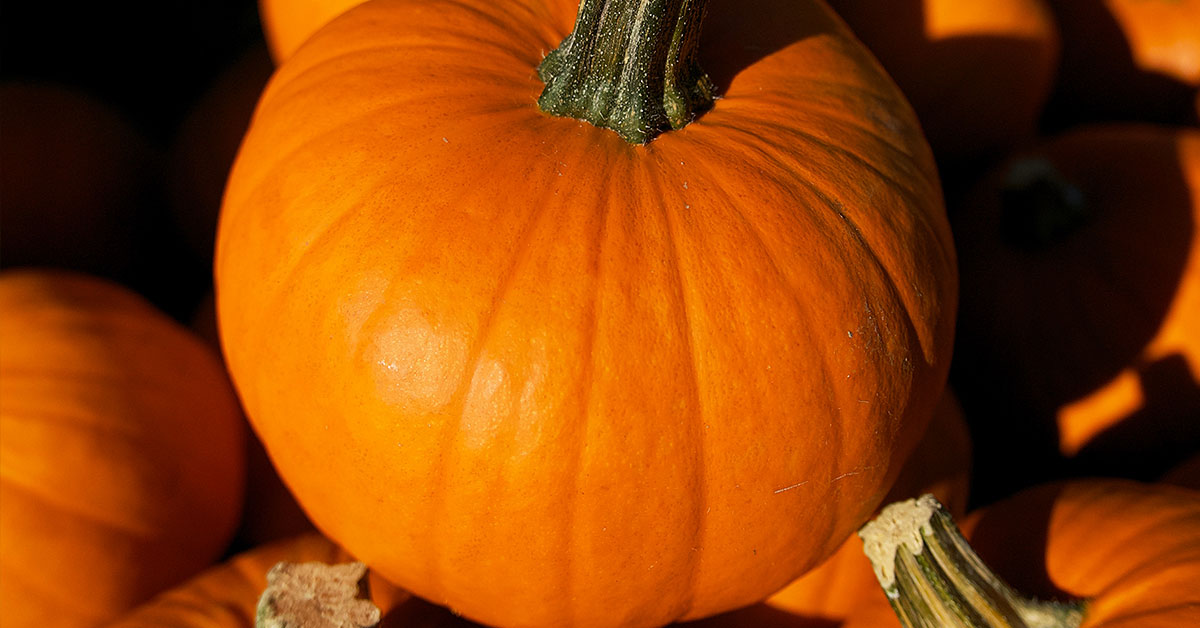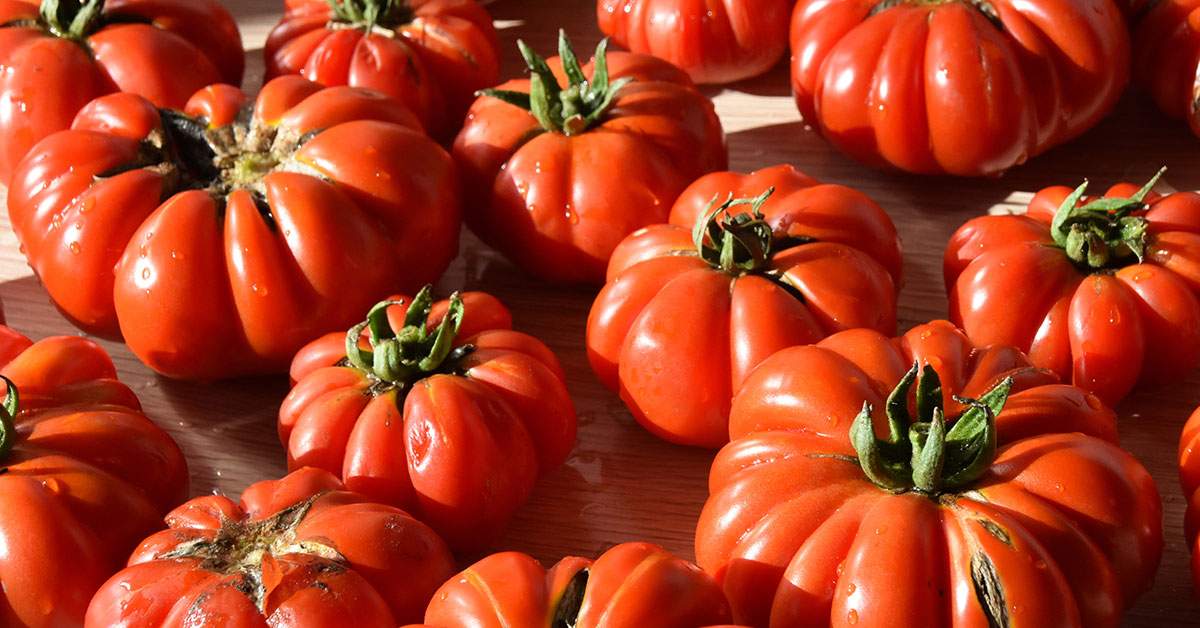The Baby Pam pumpkin is a popular variety of pumpkin that is known for its sweet and tender flesh, making it perfect for cooking and baking. It is a small, round pumpkin that typically weighs between 4 and 6 pounds.
Baby Pam pumpkins are commonly used for making pumpkin pies, soups, and purees. They are also a popular choice for Halloween and Thanksgiving decorations due to their attractive orange color and cute size. In this blog post, we will explore the many uses and benefits of the Baby Pam pumpkin, as well as provide some tips on how to grow and prepare this delicious and versatile vegetable.
What is a Baby Pam pumpkin?
If you’re a pumpkin lover, you might have heard of a Baby Pam pumpkin. It’s a unique variety of pumpkin that’s known for its small size, sweet flavor, and versatility in recipes.
Baby Pam pumpkins are a type of pie pumpkin, which means they’re bred specifically for baking and cooking. They’re smaller than other pumpkin varieties, typically weighing between 4-6 pounds, with a round shape and a slightly flattened top.
This pumpkin variety has a deep orange flesh with a smooth texture that makes it perfect for making pies, bread, and other baked treats. It’s also a popular choice for making soups and stews since it has a rich, sweet flavor that complements savory dishes.
Baby Pam pumpkins are typically harvested in late September or early October and can be stored for several months if kept in a cool, dry place. They’re a great option for fall decorating because of their small size and attractive appearance.
Overall, if you’re looking for a pumpkin variety that’s versatile, easy to work with, and delicious, the Baby Pam pumpkin might be just what you’re looking for.
How to start Baby Pam pumpkin seeds
Growing pumpkins from seed is an incredibly rewarding and relatively easy gardening endeavor. With the right preparation and care, anyone can experience the joy of watching these vibrant vines produce bountiful, colorful pumpkins. Starting pumpkins from seed allows you to choose from a wide variety of shapes, sizes, and colors to suit your preferences.
Additional Resource: Our Full Guide On Starting Pumpkins From Seed
Growing & care
Caring for pumpkins is remarkably straightforward, making it an ideal choice for both novice and experienced gardeners. Once established, pumpkins require minimal maintenance.
- Transplanting: When the danger of frost has passed and the soil has warmed up, transplant the pumpkin seedlings into your prepared garden bed or large containers. Ensure they are spaced 3-5 feet apart to allow for proper growth and airflow.
- Care and Maintenance: Water your pumpkin plants deeply and regularly, aiming for about 1-2 inches of water per week. Mulch around the plants to conserve moisture and suppress weed growth. Monitor for pests and diseases, and take appropriate action if necessary.
- Pollination: Pumpkins require pollination for fruit set. Bees and other pollinators are crucial for this process. To encourage pollination, avoid using insecticides that could harm pollinators and consider hand-pollinating if necessary.
- Fertilization: As the pumpkin plants grow, provide them with regular feedings of balanced fertilizer according to the package instructions. This will help support healthy foliage growth and fruit development.
- Pruning and Training: Control the growth of your pumpkin vines by gently pruning back excessive foliage. This promotes better airflow and directs energy towards fruit production. Use trellises or supports to train the vines if desired.
- Harvesting: Harvest pumpkins when they reach their full color, have a hard rind, and the stem starts to dry out. Cut the pumpkins carefully from the vine, leaving a few inches of stem attached. Handle them gently to avoid any damage.
Common pumpkin pests and diseases
Growing pumpkins can sometimes encounter a few common problems. Here are some issues you may face and their corresponding solutions:
- Powdery Mildew: This fungal disease appears as a white, powdery coating on the leaves, causing them to wither and die. To combat powdery mildew, ensure proper spacing between plants for good air circulation. Apply fungicides as a preventive measure or use organic treatments like neem oil or a mixture of baking soda and water.
- Squash Bugs: These pests feed on the leaves, causing wilting and stunted growth. Handpick and destroy the bugs or use insecticidal soap to control their population. Placing floating row covers over young plants can prevent squash bugs from laying eggs.
- Vine Borers: The larvae of squash vine borers burrow into the stems, leading to wilting and plant death. Cut open the stem, remove the borer, and mound soil at the base of the affected plant to encourage rooting. Applying row covers early in the season can help prevent adult borers from laying eggs.
- Blossom End Rot: This physiological disorder manifests as sunken, darkened areas on the blossom end of the fruit. It is caused by calcium deficiency or inconsistent watering. Maintain consistent soil moisture levels, provide adequate calcium through organic amendments, and mulch around the plants to regulate soil moisture.
- Poor Fruit Set: Insufficient pollination can result in poor fruit development. Encourage pollinators by planting pollinator-friendly flowers nearby. In the absence of sufficient pollinators, hand-pollinate by transferring pollen from male to female flowers using a small brush or cotton swab.
- Overwatering or Root Rot: Excessive watering or poorly drained soil can lead to root rot and plant decline. Allow the soil to dry slightly between waterings, and improve drainage by amending the soil with organic matter or growing pumpkins in raised beds.
- Weeds: Weeds compete for nutrients, water, and sunlight, hampering pumpkin growth. Regularly weed around the plants to minimize competition and maintain a weed-free zone.
Remember to monitor your plants regularly, catch problems early, and apply appropriate treatments promptly. By implementing these preventive measures and taking swift action when needed, you can address common pumpkin-growing problems and enjoy a successful harvest.
When to harvest Baby Pam pumpkins
If you have grown Baby Pam pumpkins in your garden, you may be wondering when the best time to harvest them is. Baby Pam pumpkins are a type of pie pumpkin that are small in size, but big in flavor. They are perfect for creating pumpkin puree that can be used in a variety of recipes, including pies, soups, and baked goods.
The best time to harvest Baby Pam pumpkins is when they are fully mature. You can tell that a pumpkin is mature by its skin color and texture. When the pumpkin is fully mature, its skin will be a deep orange color and the texture will be hard. The stem of the pumpkin will also start to dry out and turn brown.
To check if your Baby Pam pumpkins are ready to be harvested, gently press on the skin with your finger. If the skin feels hard and the pumpkin is no longer growing, it is ready to be harvested. If the skin is still soft and pliable, the pumpkin needs more time to mature.
It is important to note that Baby Pam pumpkins should be harvested before the first frost. If the pumpkins are exposed to frost, they can become damaged and rot. To avoid this, make sure to harvest your pumpkins before the temperature drops below freezing.
Once you have harvested your Baby Pam pumpkins, store them in a cool, dry place. They can be stored for several months if kept in a temperature-controlled environment.
In conclusion, harvesting Baby Pam pumpkins can be a fun and rewarding experience. By waiting until the pumpkins are fully mature and harvesting them before the first frost, you can ensure that you have delicious and flavorful pumpkins to use in your favorite recipes.
Uses for Baby Pam pumpkins
Baby Pam pumpkins are a type of small, round pumpkin that are typically used for cooking and baking. These pumpkins are highly sought after by chefs and home cooks alike due to their sweet, dense flesh and their ability to hold their shape when cooked.
One of the most popular uses for Baby Pam pumpkins is in making pumpkin puree, which is a key ingredient in many different recipes. This puree can be used to make pumpkin pies, muffins, breads, and even savory dishes like pumpkin soup or risotto.
Another common use for Baby Pam pumpkins is in roasting. When roasted, the flesh of these pumpkins becomes caramelized and rich in flavor, making them a delicious addition to any meal. They can also be used in stews and curries, where their sweet flavor pairs well with spicy or savory ingredients.
Overall, Baby Pam pumpkins are a versatile and delicious ingredient that can be used in a wide variety of dishes. Whether you’re a professional chef or a home cook, these pumpkins are sure to add flavor and depth to your favorite recipes.













